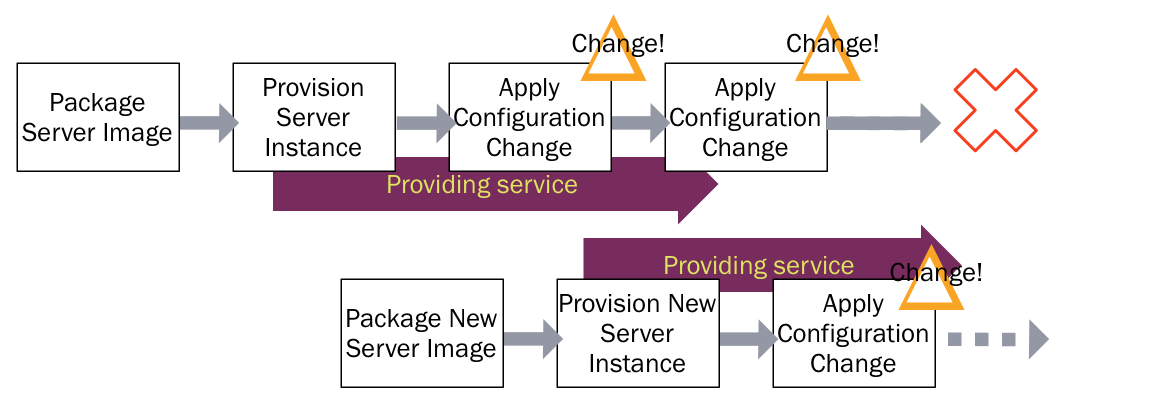tagged by: build scripting
Using the Rake Build Language
Rake is a build language, similar in purpose to make and ant. Like make and ant it's a Domain Specific Language, unlike those two it's an internal DSL programmed in the Ruby language. In this article I introduce rake and describe some interesting things that came out of my use of rake to build this web site: dependency models, synthesized tasks, custom build routines and debugging the build script.
Build Language
Bruce Eckel's recent post on ant and make triggered me to share some of my thoughts about build languages. Both ant and make specify how builds happen, they are a language for describing builds. Both are pretty widely used and have been successful. Yet both run into limitations, with larger systems it's quite common to find people generating their ant/make files from other programs.
Deployment Pipeline
One of the challenges of an automated build and test environment is you want your build to be fast, so that you can get fast feedback, but comprehensive tests take a long time to run. A deployment pipeline is a way to deal with this by breaking up your build into stages. Each stage provides increasing confidence, usually at the cost of extra time. Early stages can find most problems yielding faster feedback, while later stages provide slower and more through probing. Deployment pipelines are a central part of ContinuousDelivery.
Immutable Server

Automated configuration tools (such as CFEngine, Puppet, or Chef) allow you to specify how servers should be configured, and bring new and existing machines into compliance. This helps to avoid the problem of fragile SnowflakeServers. Such tools can create PhoenixServers that can be torn down and rebuilt at will. An Immutable Server is the logical conclusion of this approach, a server that once deployed, is never modified, merely replaced with a new updated instance.
Output Build Target
In the past few days I've been reviewing an in-progress article by a Julian Simpson, a colleague of mine, on refactoring ant files. Julian is one our “deployment dudes” who've been responsible for applying our agile-oriented work habits to the deployment of systems. In doing this Julian has run into more than his fair share of gnarly ant build scripts. His article is a nice description of some his favorite ways to clean up the mess.
Reproducible Build
One of the prevailing assumptions that fans of Continuous Integration have is that builds should be reproducible. By this we mean that at any point you should be able to take some older version of the system that you are working on and build it from source in exactly the same way as you did then.
Touch File
When doing builds using make, you determine whether you need to
do work by comparing the modificiaton dates of the output file and
the input files. For things like compiling (a.out depends of foo.c)
this works well, but sometimes the output is harder to see.
